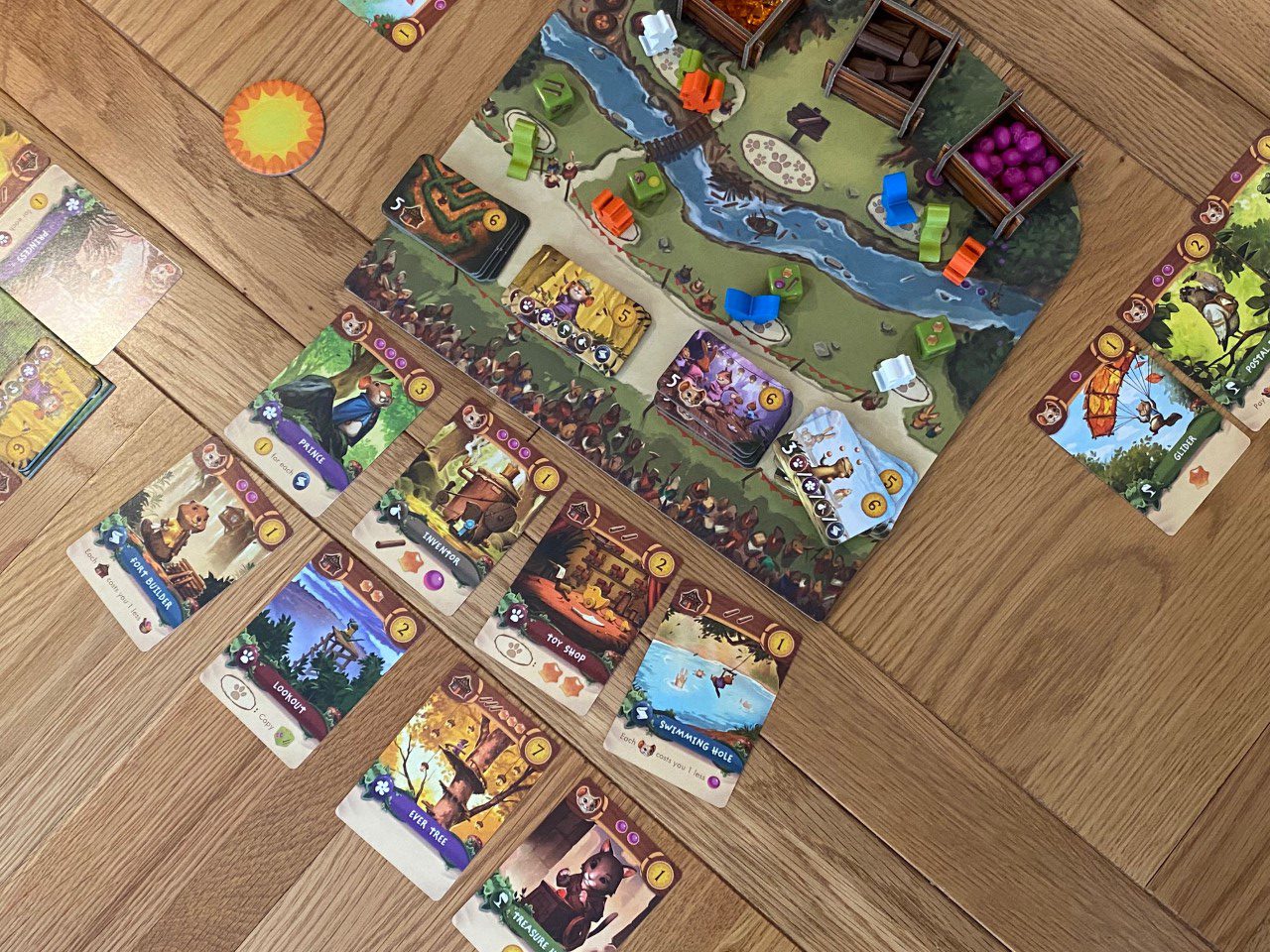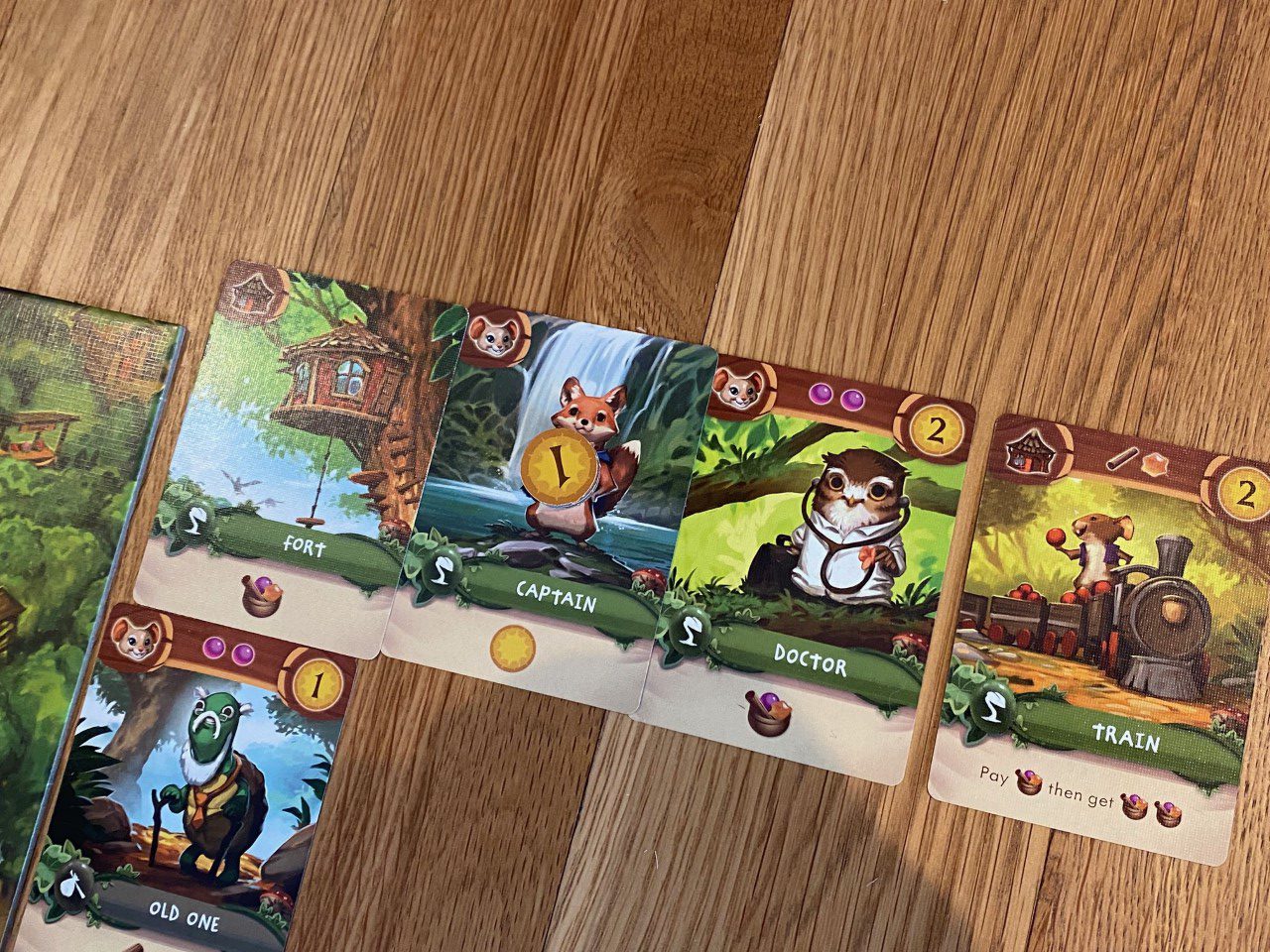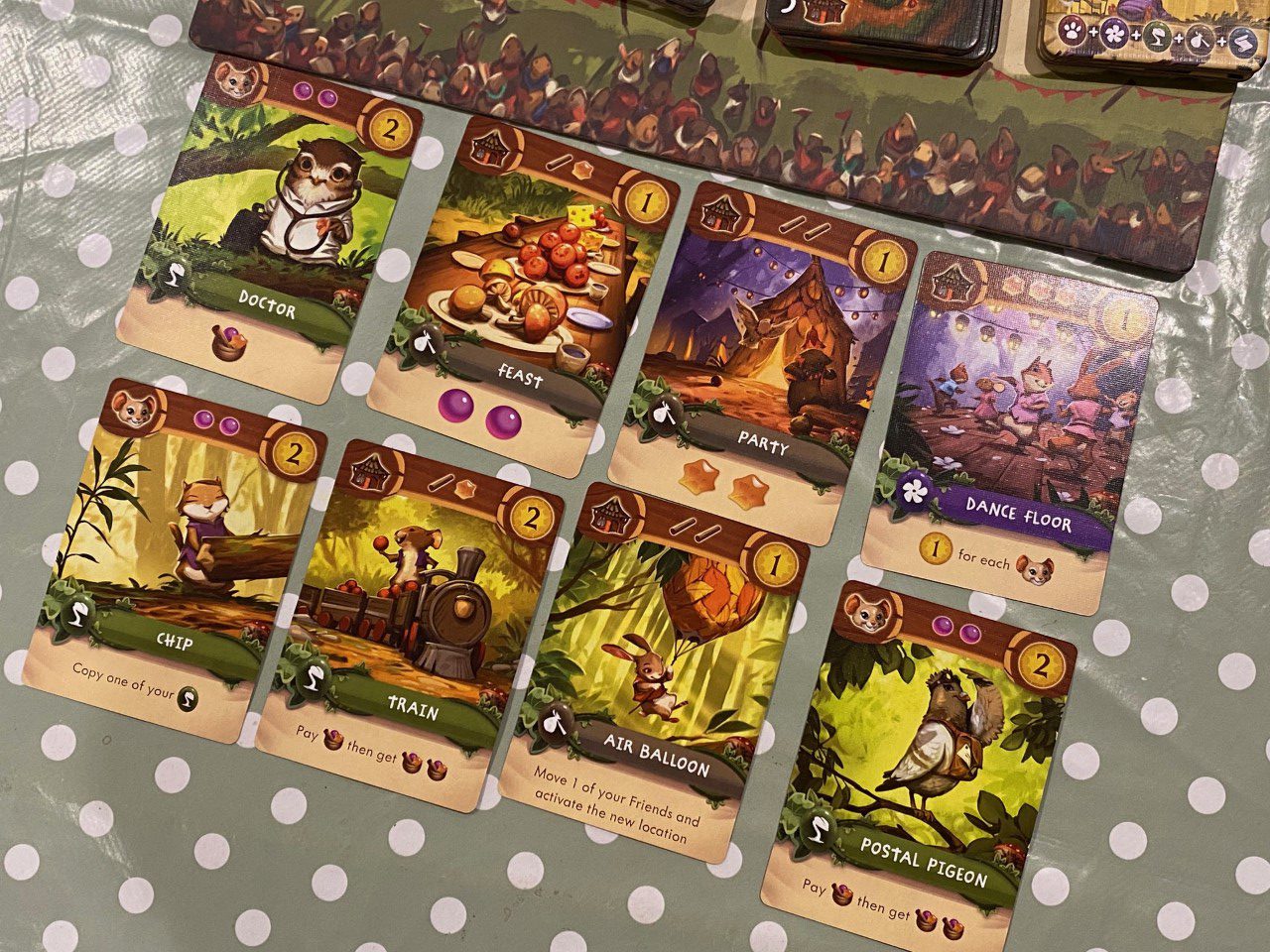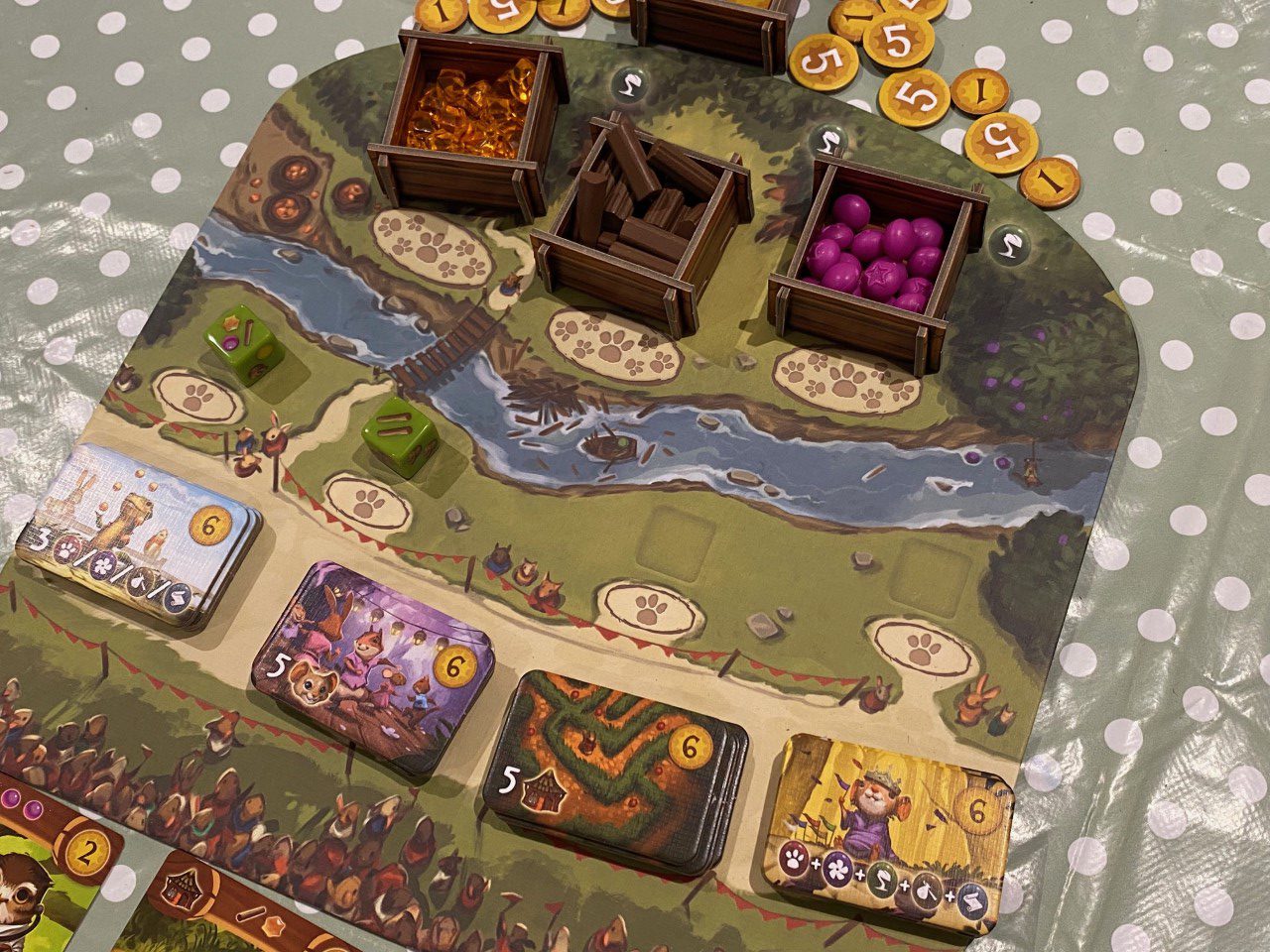My ‘Lil Everdell is a child friendly version of a modern classic!
For anyone who has read our exhaustive review or Top 50 Games We’ve Ever Reviewed, you’ll already know that Everdell is one of our very favorite games. The only downside? Everdell is a relatively complex game with lots of engine-building and complex mathematical decisions, so whilst it’s super cute — my kids can’t play it! This must have been a universal problem however, and I am delighted to see that Starling Games have recently launched a kid-friendly version known as My Lil’ Everdell.
In My Lil’ Everdell the gameplay and the overall objective is very similar to that of the original game, and players will still be drafting Construction and Critter cards into their village in order to build an engine. Where Everdell often drives towards complex engines that span across multiple cards, My Lil’ Everdell tends to offer rewards that are more clear and simple. Cards that produce goods are rarely conditional, cards that score points based on other cards will use a single, familiar symbol and so on.

Equally, the flow of the game is super simple. Each player chooses a group of animal friends (represented by mouse, fox, lizard or butterfly meeples) and sets them down besides a player board (which doesn’t do much aside from providing a sort of “guide rail” for card placement later). Younger or less experienced players may be given a head start by placing a Captain and a Fort card into their tableau — and these will produce a bonus point and resource during each production phase, and add their symbols to a few of the in-game effects.
When it comes to taking turns, the current player simply takes an animal friend meeple and places it onto a space on the board. There are between two and four spaces (depending on player count) spaces that can each take one animal friend, and provide resources based on a dice that is rolled and placed during round setup, and then there are three spaces that provide basic resources — wood, berries and amber — and these spaces can accommodate any number of animal friends.

Once a player has placed their animal friend and taken the associated resource (or resources if a die was chosen) they will then see if they can afford to buy one of the eight cards from the display. Most cards require between two and four resource symbols, but there are a small number that cost just one, or more than four. These cards are usually quite special, either because they are very weak or could score a lot of points respectively.
There are always enough die spaces for each player to place an animal friend onto a die, and that is normally the advisable play since all dice provide more than one resource (and all normal spaces provide just one resource). There are also some cards that can be placed into a personal tableau and will provide a further action space for that player only — and sometimes these spaces will offer unique resource combinations, or will replicate a die face.

In very broad strokes, My Lil’ Everdell is all about trying to get the most resources that you can on each turn, and ideally playing one card per turn. At the very least, if you choose to focus on more expensive cards, you’ll still want to invest in your engine (often made up of cheaper cards) to try and generate lots of resources in later rounds. Players who go for points cards (which are purple) early on will really need to work hard to make those cards pay off later in the game, because in My Lil’ Everdell there are only going to be 12 turns per player (four rounds in which three animal friends are placed).
This gives My Lil’ Everdell a nice flow, as younger players never have to wait more than one turn to expand their town — and once they get used to it, even very young (six plus) players quickly learn to invest in green (production) cards during the first round that will generate resources for them over several further rounds. Another interesting mechanic is the addition of blue cards which change the rules of the game — for example by reducing all building costs by one resource.

These cards and rule changes can be complex for youngsters to understand and remember, but over the course of several games we did get there — and this kind of “outside the box” logic will really help with coming to terms with more complicated games. The essence of the original Everdell (which uses these effects a lot) is certainly captured through this kind of mechanic, and as a player of both games, I appreciated that.
Just as important as capturing the feel of the original Everdell is probably capturing the same beautiful artwork and components. My Lil’ Everdell certainly does that, with artwork that is near-identical to the game that inspired it, and even some of the characters (Critters) being obviously present in both versions of the game. If you’ve ever had a child run up to your game of Everdell brimming with excitement because of the animals on display, only to slump away disappointed because the game was too complex, then My Lil’ Everdell is literally what you’ve been waiting for.

Despite being simpler than Everdell, My Lil’ Everdell is still relatively complex for most games aimed at players of six and up. Aside from the five different kinds of cards and the relatively complex scoring that comes with them, there’s also the concept of the four “parade” tiles, which reward players with points for achieving different combinations of cards in their tableau. These, sadly, are a step too far for very young players, but those around eight, nine and upwards did seem quite happy to consider the additional points on offer and amended their strategies accordingly.
This makes me conclude something interesting about My Lil’ Everdell — which is that whilst it is a much simpler, more child-friendly version of Everdell, it is still quite complex for children at the lowest end of its age range (six). That said, for those who do persevere, it’s a fantastic ramp up to more complex games — especially those with engine-building or complex scoring based on the tableau style scoring of Everdell.
You can find My Lil’ Everdell on Amazon.
Love board games? Check out our list of the top board games we’ve reviewed.
Comments are closed.